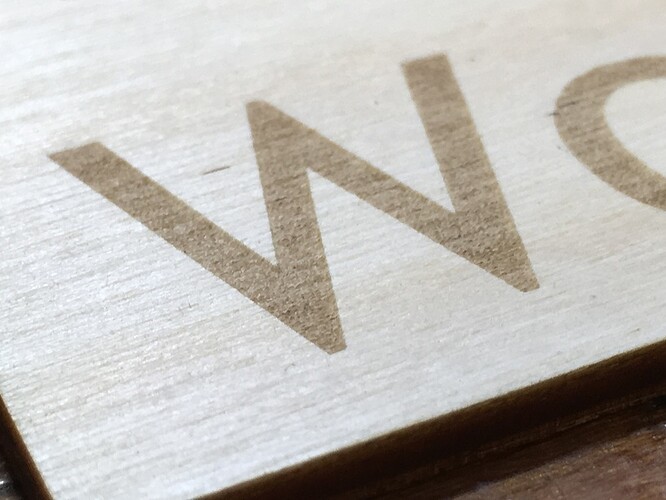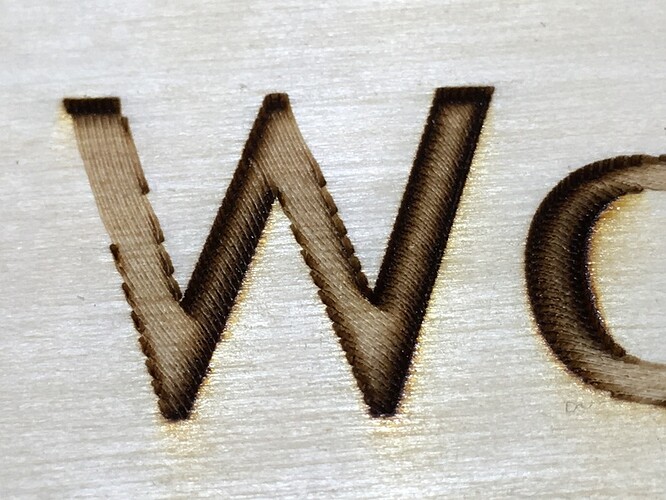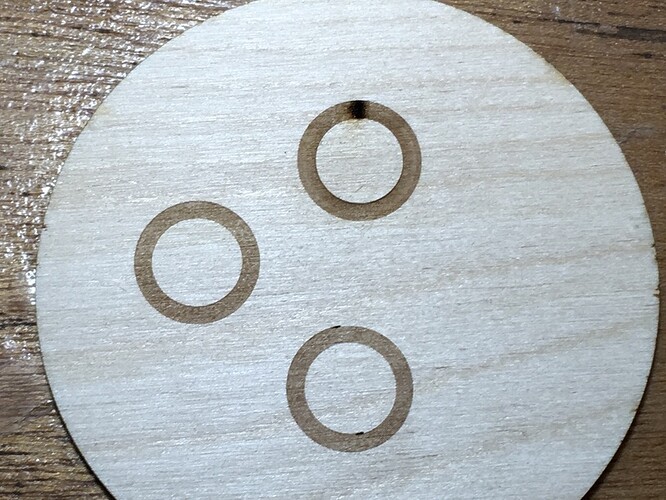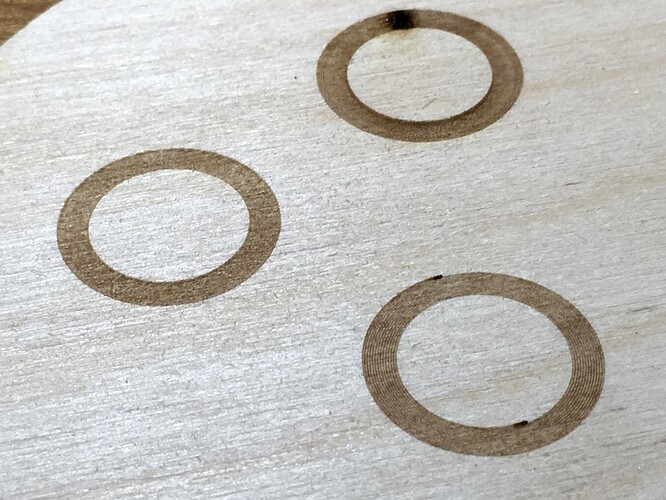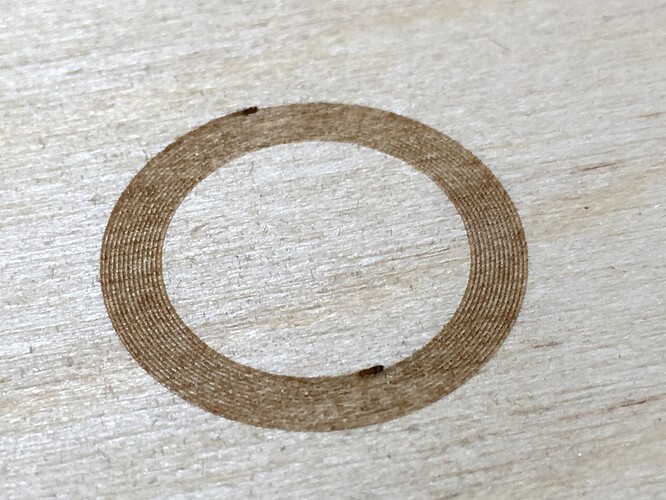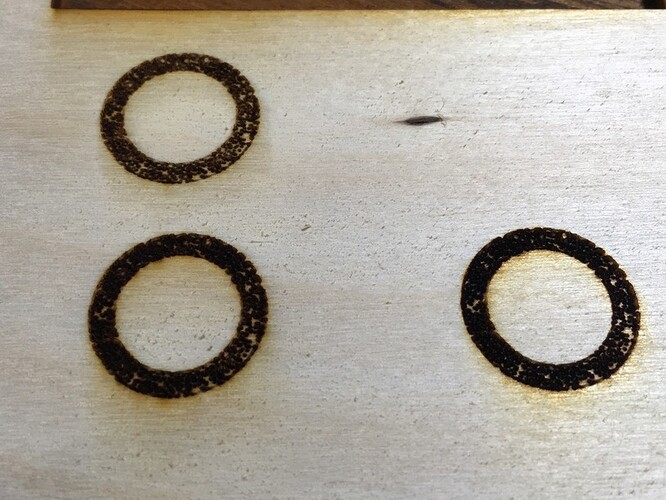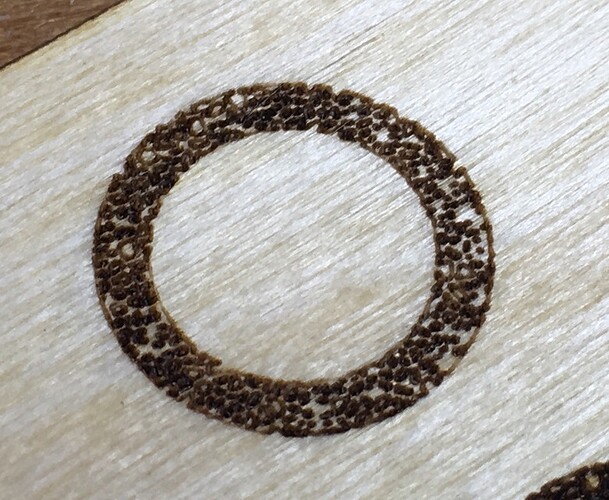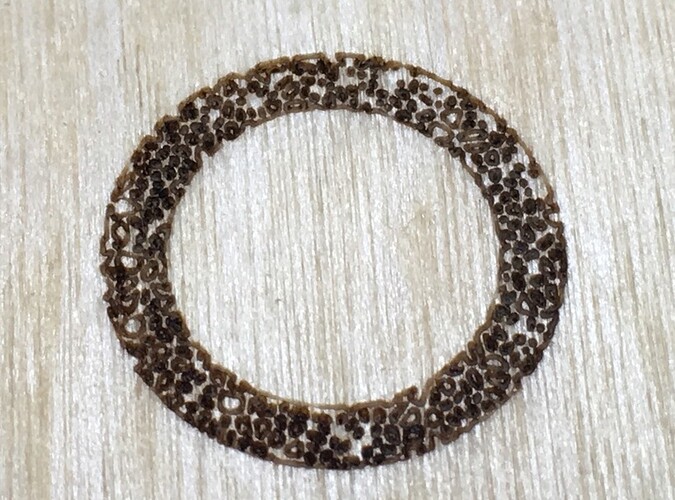I wanted to see if it would be faster to make my own engraving paths. Basically I made a series of concentric or spiral shapes and scored them to see if it would work as an engrave. The end result is that it does work, with mixed results.
All settings are 500/15 on Baltic Birch. This is not a great setting for anything, it was just reasonably fast and showed what I was looking for.
First: This is a traditional engrave. Nice and crisp. no hot spots, but slow. Engrave time: 7:00
Next up, I took 300 .2mm lines, converted stroke to path, and did a path->intersection with some text outlines in Inkscape. This yielded a ton of skinny “rectangles”-ish. They aren’t really rectangles, but they are skinny horizontal shapes. Pretty tough burn, and some obvious steps on the sides of things, but a bit faster, at 6:15
After that, I took a spiral shape and did a similar slice. This was even faster, at 5:06.
Some additional detail on the spiral engraves:
And here are all three engraves stacked up.
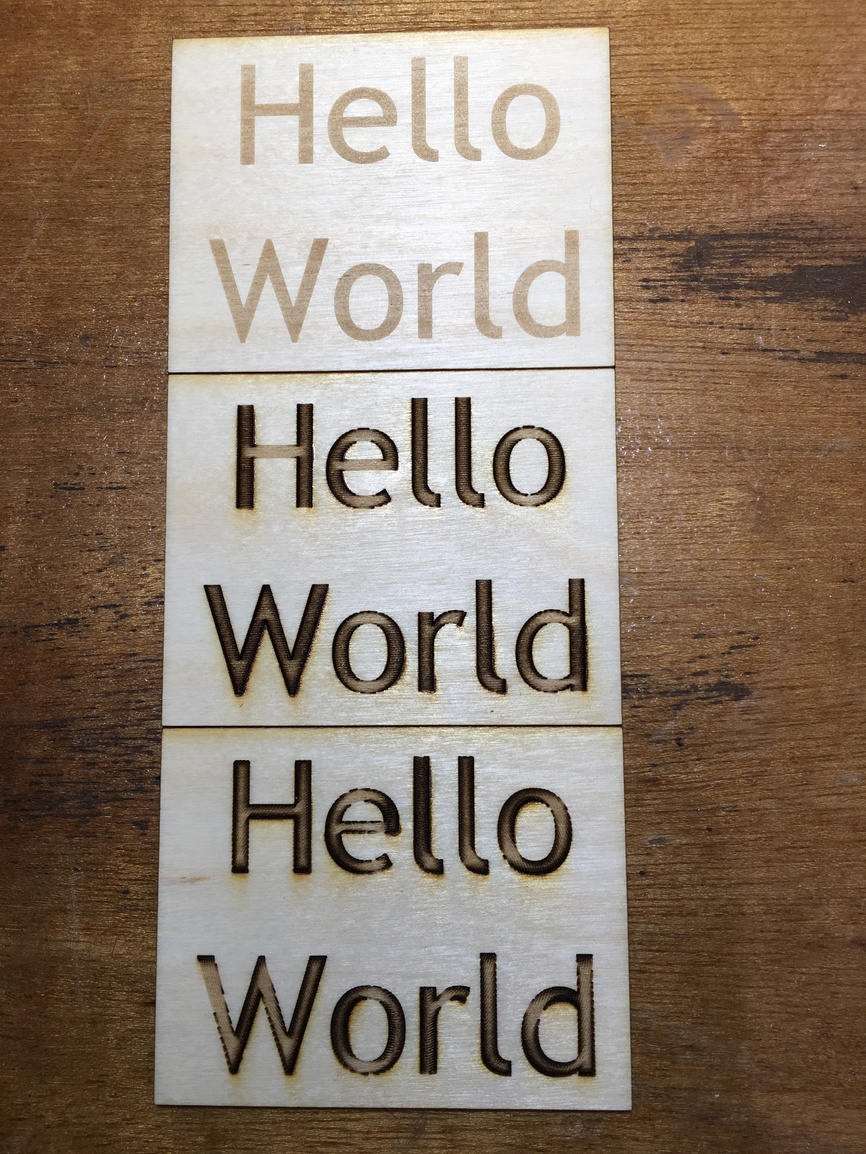
But really it all started with seeing if a set of concentric circles would work as an engrave. On left, a traditional engrave. at top, nested concentric circles, and bottom right is a spiral. Speed was really interesting and predictable here.
Traditional engrave: 1:46
Concentric rings: 0:27
Spiral: 0:13
Slightly more detail:
Closeup on the spiral:
Spirals are very very fast compared to traditional engrave, but I think the main reason for that is because it is one unbroken path with no sharp corners. As with all scores, you see hot spots at the starts and stops of paths, which is why you get that unsightly burn in the concentric circles. This could maybe be improved by rotating the circles, and breaking the paths at different spots, but I didn’t get to try that yet.
What do I take away here? The spiral engrave is visually very similar to the traditional engrave style, and only takes about a seventh of the time. If we can find a way to manually offset paths that results in a single unbroken path with no or few corners, we can likely see faster engraves for primitive shapes, but this may not have much application outside of simple jobs. These results are definitely subjective and skewed, because I was operating at a .2mm pitch which I think comes out to about 64 LPI, but even linearly scaling for LPI, it’s still much faster.
If Glowforge solves the hotspot problem on scores, then we’re starting to see real potential to use this, especially when engraving text. Concentric rendering techniques were a bit under a third the time as a traditional engrave, at least for circles.
